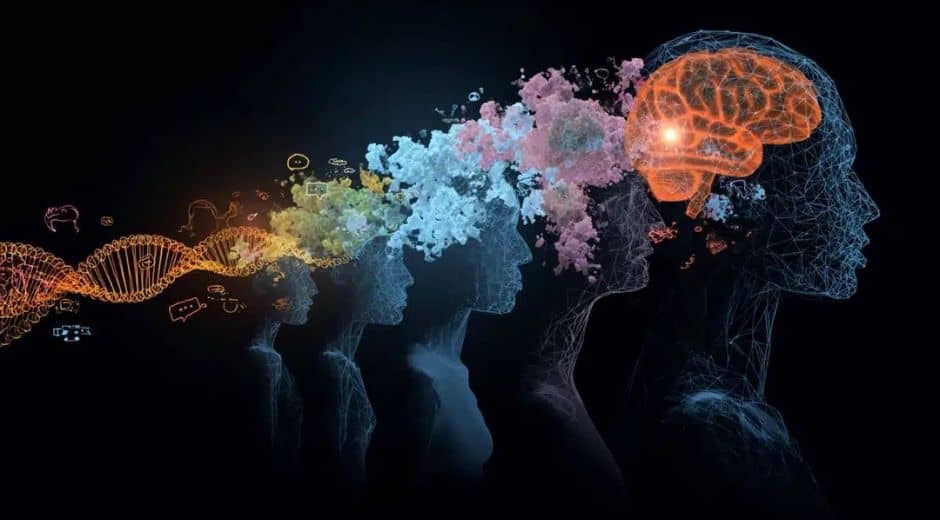Visualization Practices: Ignite Your Mental Clarity
Visualization Practices: Ignite Your Mental Clarity
In today’s fast-paced world, mental clarity has become one of the most valuable assets. From decision-making to creativity and emotional balance, a clear mind allows you to navigate challenges with confidence and focus. One of the most effective tools for achieving this clarity is visualization — a practice that uses mental imagery to shape thoughts, behavior, and outcomes.
Is more than imagining success; it’s a structured, intentional process that engages the mind to create a vivid blueprint for goals, habits, and mindset. Studies have shown that the brain often cannot distinguish between vividly imagined experiences and real ones, making it a powerful method to train the mind for achievement.
The Science Behind It
Neuroscience supports the effectiveness. When you vividly picture an action or outcome, your brain activates the same neural pathways as if you were actually performing the task. This means imagining a positive scenario can reinforce confidence, reduce anxiety, and prepare the mind for real-life challenges.
Research highlighted in sources such as TheTimes demonstrates that athletes, professionals, and performers frequently use visualization to enhance performance, refine skills, and maintain focus. Applying these principles to everyday life can improve productivity, creativity, and emotional well-being.
How to Practice
Practicing it doesn’t require elaborate tools — just focus, consistency, and imagination. Here are some steps to guide you:
Define Your Goal: Be specific about what you want to achieve. Whether it’s completing a project, enhancing creativity, or cultivating calm, clarity starts with a defined target.
Create a Mental Image: Close your eyes and picture the scenario in vivid detail. Engage all senses — see the environment, hear sounds, feel textures, and even notice scents if applicable.
Add Emotion: Feel the success or calmness in your visualization. Emotional engagement strengthens the brain’s response, making the imagery more impactful.
Repeat Regularly: Consistency is key. Daily or multiple sessions per week ensure the mind internalizes the mental patterns, reinforcing habits and confidence.
Integrate with Action: Visualization is most effective when paired with real-world steps. The practice primes the mind for action, but actual effort is essential for results.
Applications of Visualization
It can be applied across multiple areas of life to enhance mental clarity and performance:
Productivity: Imagining a structured workflow or successful completion of tasks can boost focus and reduce procrastination.
Stress Reduction: Visualizing calm, serene environments helps regulate emotions and decrease anxiety.
Decision-Making: Mentally rehearsing potential outcomes allows for clearer judgment and confidence.
Creative Thinking: Visualization stimulates innovative ideas by letting the mind explore possibilities without constraints.
By integrating it into daily routines, you empower yourself to navigate challenges with precision, creativity, and composure.
Enhancing the Practice
To deepen the impact of visualization, consider these enhancements:
Journaling: Write down your visualizations to clarify intentions and track progress.
Guided Imagery: Use audio guides or recordings to direct your mind toward specific scenarios.
Mindfulness Integration: Pair visualization with meditation or breathing exercises to heighten focus and presence.
Exploring visualization techniques in combination with mindfulness practices can create a powerful synergy, reinforcing mental clarity and emotional resilience.
Long-Term Benefits
Consistent visualization practice produces profound benefits over time. Individuals report increased confidence, better problem-solving skills, improved emotional regulation, and heightened creativity. Additionally, fosters a proactive mindset, helping people anticipate challenges and respond effectively.
By cultivating mental clarity through visualization, you are not only preparing for immediate tasks but also building long-term habits that support overall well-being, success, and personal growth.
Practical Tips for Daily Integration
Morning Visualization: Start the day with a 5–10 minute session to set intention and focus.
Break-Time Practice: Use short visualization exercises during work breaks to reset and refocus.
Evening Reflection: Visualize desired outcomes for the next day, reinforcing confidence and preparation.
Visualization Journal: Record your images, emotions, and progress to reinforce learning and track growth.
Involve Multiple Senses: The more detailed and sensory-rich the imagery, the more effective the practice.
By embedding these techniques into daily life, it becomes a natural habit that enhances both clarity and performance.
Real-Life Applications
Professionals, athletes, and creatives have long harnessed visualization to achieve success. From rehearsing presentations to imagining athletic victories, primes the mind for excellence. In everyday life, parents, students, and entrepreneurs can use the same principles to boost focus, manage stress, and maintain a balanced mindset.
Even small, consistent sessions can create meaningful changes. For example, visualizing a calm response to a challenging conversation can improve emotional regulation and social interactions. Imagining a successful project completion can motivate action and reduce procrastination.
At FocusMindFlow, we encourage integrating visualization as a cornerstone of mental balance, supported by external insights from sources like Politicxy and TheTimes, to cultivate a resilient, focused, and intentional mind.
Conclusion
Visualization is a powerful tool to ignite mental clarity, enhance focus, and cultivate intentional living. By engaging imagination, emotion, and repetition, you train your brain to anticipate success, reduce stress, and act with confidence.
Whether used for productivity, creativity, emotional regulation, or personal growth, transforms mental patterns into actionable reality. With consistent practice and thoughtful integration into daily life, anyone can harness the power of the mind to achieve clarity, balance, and peak performance.
Focus Flow Forward

Grounding Techniques for a Balanced Mind
Grounding Techniques for a Balanced Mind

Stillness as a Path to Inner Awareness
Stillness as a Path to Inner Awareness

The Power of Alignment: Flowing in Harmony with Yourself
Learn how alignment helps you reconnect with your true self, find balance between mind and action, and live in a state of natural inner flow.

The Path to Stability: Strengthening Your Inner Foundation
Explore how cultivating stability in your thoughts, emotions, and routines builds mental balance, clarity, and peace in a fast-changing world.













